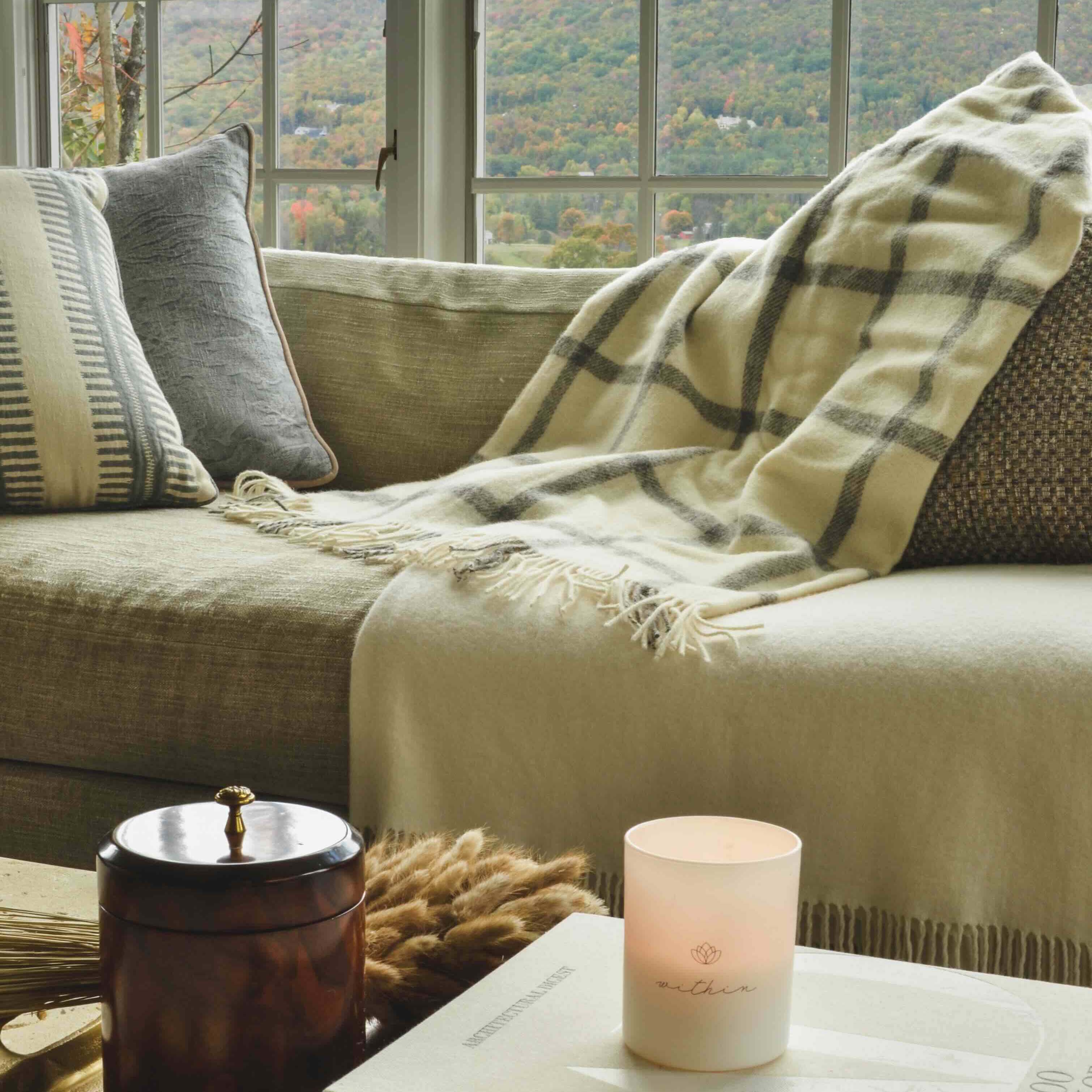
The Power of Texture: Creating a Grounded Home
There’s something quietly transformative about texture. It’s what makes a space feel alive, warm, and deeply human. Fall, in particular, is the perfect season to reconnect with this sensory side of design. As life slows and we spend more time indoors, the tactile elements of our homes begin to shape our experience of comfort, calm, and belonging. When used intentionally, texture has the power to ground us — both visually and energetically.
Why Texture Matters
Texture is the bridge between what we see and what we feel. It’s what turns a beautiful room into one that feels soulful. In design, texture creates depth,warmth, and balance — countering sleek or minimal lines with softness, and adding layers that make a space feel collected over time.
But texture isn’t just about fabric or finishes. It’s about how your home interacts with the senses. The smoothness of an antique wood table worn down by the hands of time, the crisp texture of linen, the earthy feel of clay — each evokes a subtle emotional response. These tactile details calm the nervous system and bring us back into the present moment.
When we consciously engage with texture, we’re really creating spaces that feel like home — sanctuaries that nurture our inner and outer worlds.
How to Layer Texture for a Grounded,Harmonious Space
The key to using texture beautifully is balance. Too much can feel chaotic; too little can leave a room flat or sterile. The magic happens when you layer textures in thoughtful, intentional ways that invite touch, warmth,and presence.
Here are a few of my favorite ways to bring texture into your home:
1. Start with Natural Foundations
Ground your space with organic materials like wood, rattan, linen, jute, or clay. These elements connect us to the natural world and create visual warmth.
Try adding:
• A woven jute or wool rug underfoot
• Linen drapery that softens natural light
• Distrussted, antique wooden futniture
These materials add both beauty and grounding energy — a reminder of the calm we find in nature.
2. Layer Soft Textures for Comfort
Once your foundation is set, add softness through textiles. Think plush throws, down pillows, and upholstered pieces in calming, tactile fabrics.
Mix contrasting yet harmonious materials:
• Velvet with linen
• Wool with cotton
• Bouclé with leather
Layering multiple fabrics in one palette creates depth and an inviting, cocoon-like feel, especially in spaces where you want to unwind.
3. Use Texture to Create Visual Flow
In open-concept homes, texture can help define zones without the need for walls.
For example:
• A high-pile rug beneath a seating area instantly creates intimacy.
• A textured lighting fixture adds dimension and subtly marks a zone.
• A large pottery piece placed thoughtfully can guide the eye and create rhythm throughout the space.
Texture subtly guides the eye, creating movement and flow while keeping the space feeling grounded and intentional.
4. Incorporate Handmade and Imperfect Pieces
Handmade objects bring soul to a space. Pottery with uneven edges, a handwoven throw, or a vintage stool tells a story of the human hand, grounding the room in authenticity. These imperfections add emotional warmth and remind us that beauty often lies in the imperfect and the real.
5. Engage the Senses Beyond Sight
True texture is multi-sensory. Think beyond how something looks and consider how it feels, smells, and even sounds.
• Scent: A grounding essential oil like cedarwood or sandalwood can soften the energy of a space
• Sound: Layering natural sound textures a soft playlist, a trickling fountain — deepens a sense of calm
• Temperature: Warm metallic accents or soft lighting can “feel” textural by how they shift mood and tone
Engaging multiple senses creates a holistic experience of comfort and renewal.
Creating a Grounded Home Is About More Than Design
At its heart, texture is about connection to the earth, to ourselves, and to the spaces that hold our lives. It invites us to slow down and engage with our surroundings intentionally. When we design through the lens of feeling, our homes begin to mirror who we are and what we need most.
So this season, as you settle in and embrace the inward turn of fall,notice what textures make you feel most at home. Add one small layer at a time —a woven basket, a cozy throw, a vase with natural branches — and let your space evolve around you.
Because a truly grounded home isn’t just one that looks beautiful. It’s one that feels like a deep breath.


